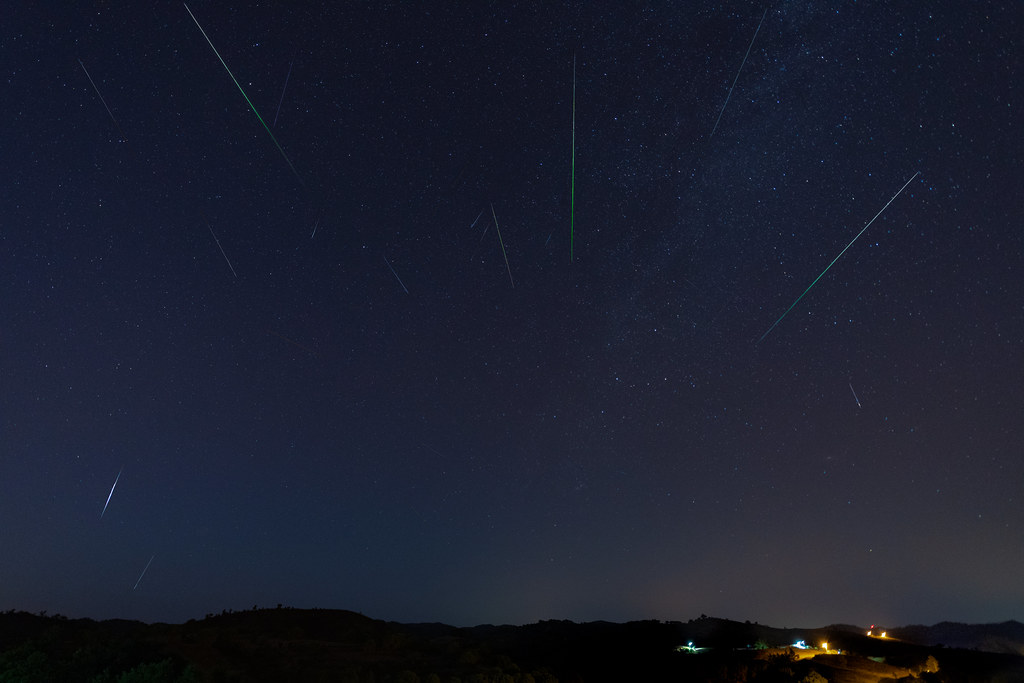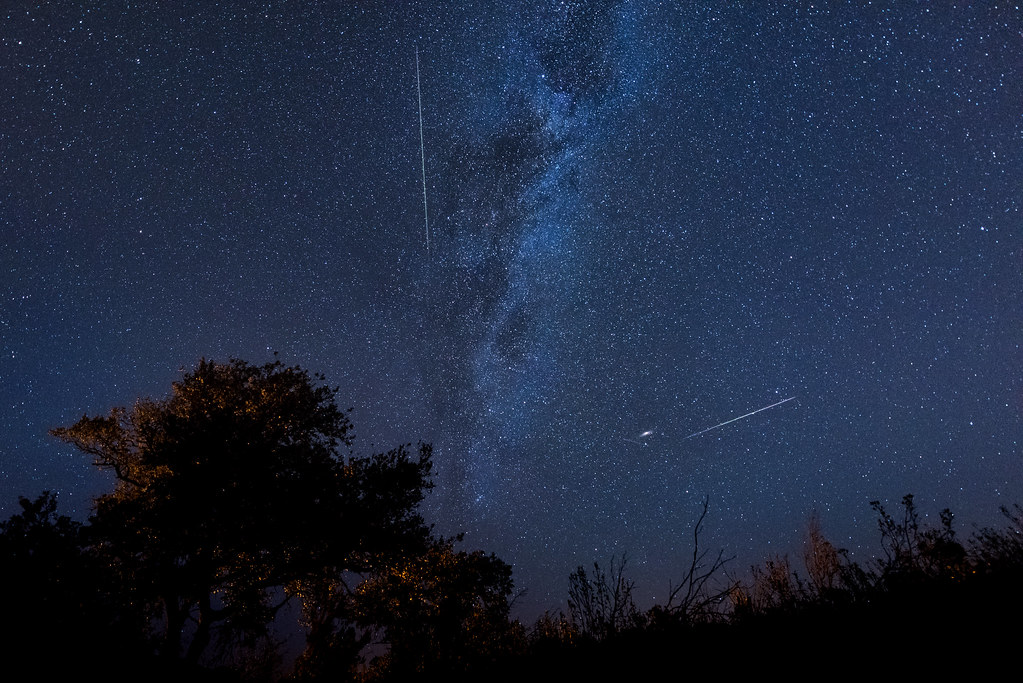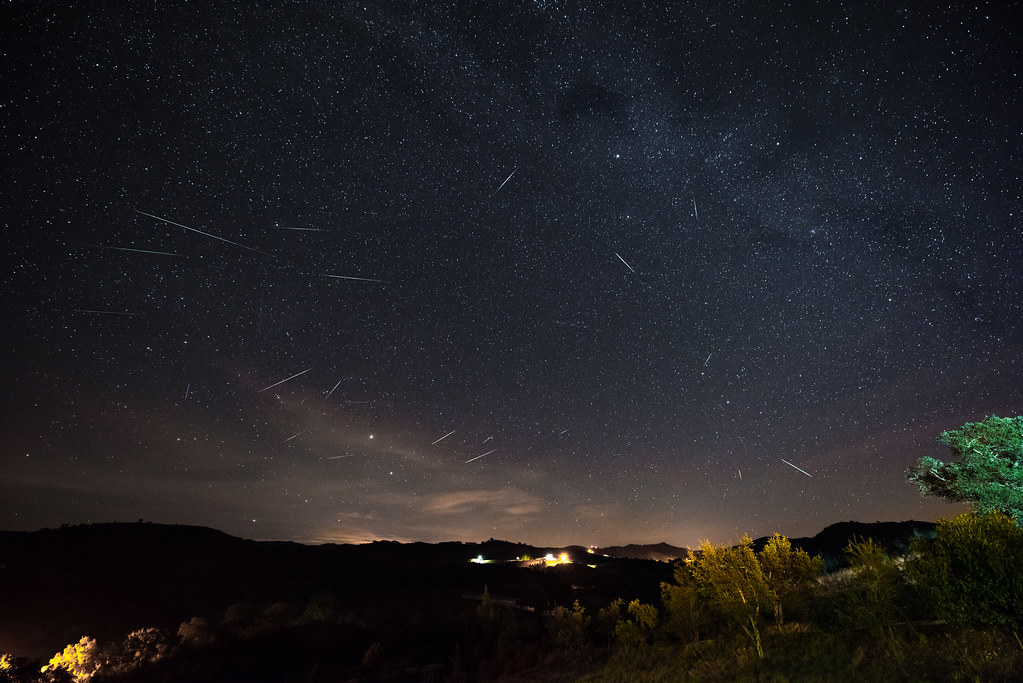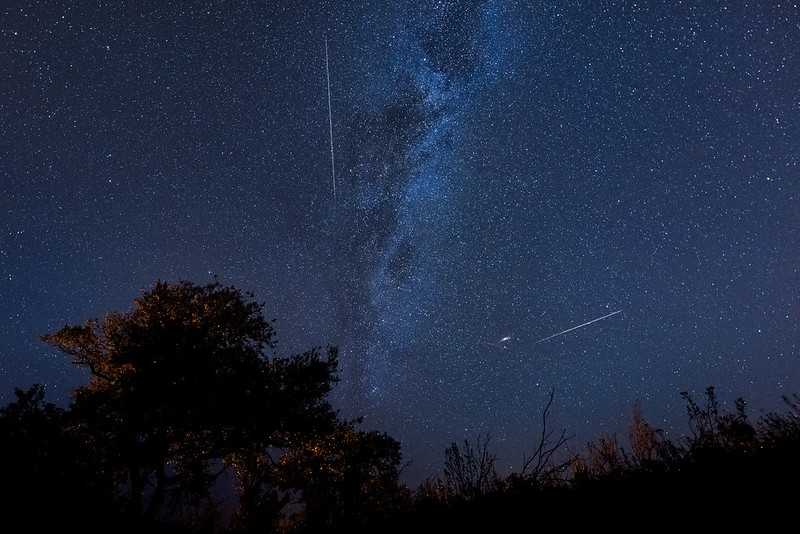I have a great amphitheatre for the annual Perseid Meteor Shower, a nice open terrace with a panoramic view North to East. It’s not the best location to photograph them, however, I set the camera up to capture 15 second exposures constantly for 3 hours whilst I lay on a sunbed in the warm night air with a beer or two and watched the skies. I occasionally moved the camera so that it would take into account of the movement of the constellation Perseus which is where most of the streaks are coming from and where the name Perseids is taken from.
Here is a composite photograph with the the first image used as the base photo and then any streak captured overlaid because of course, the stars move. The very bright streak in the bottom left looks more like an Iridium Flare from a satellite rather than a meteor. This is when the sunlight reflects off a satellite surface causing a bright flash that can last a few seconds.
(Click to view in Lightbox)





